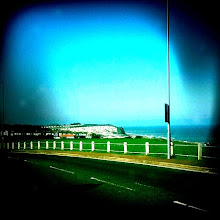I cut out an obituary recently of a wood engraver by the name of John ‘O’Connor. It was illustration of his wood engraving, ‘Little Garden in the Evening’ attributed to the year 1946 that caught my attention. I felt there was something deeper in this engraving that had affected me. It’s a summer evening, of that I am sure. In the foreground there are several grasses and towering weeds and a barrel full of water. Behind this a fence enclosed garden with what looks like a pair of hollyhocks, standing above a sea of what could be crowfoot, pyrethrum or maybe candytuft. Behind this is a garden shed, pointing up to the sky like a cathedral to nature. The background is made up of various trees, swinging their branches furiously as the sky darkens with an incoming storm. The water in the barrel is like a tiny sea, the surface water angry and unfit for sailing. The shed is peculiar; it almost seems out of place, a hermitage for O’Connor’s thoughts. The Obituarist Simon Fenwick writes: “He (O’Connor) saw his favourite painting places in Suffolk – the ponds, willows, briars and honeysuckle – disappear beneath the bulldozer and combine harvester, and eventually moved with his wife to the emptier spaces of south-west Scotland.” O’Connor was chasing a ghost, a rural ghost, much like John Sell Cotman’s ‘From my father’s House at Thorpe’ had chased a garden of childhood memory, and instead of a work steeped in nostalgia, we see instead work bathed in melancholia; swimming in the black bile of a man’s inner life. O’Connor’s engraving is alive – I can feel the wind, and the air alive with the storm’s electricity. I can smell the heavy perfume of the garden flowers. And I can hear the trees and the water moving in the barrel. Trees have always played a part in human death; they are the dark smudge at the edges of our vision. As a child I remember a man from the village disappearing a week before Christmas. I was at a friend’s house, and we decided to go into the woods and he suggested that we may find the man living wild amongst the trees. That evening we sat watching the Two Ronnies, anticipating The Phantom Raspberry Blower, while waiting for my father to collect me. We were so engrossed that we had not noticed the arrival of my father who was talking in hushed tones to my friend’s parents. They had found the man hanging in the woods. Not far from Shepherd’s Barn where a farm-hand had taken his life too, in the very same manner. Nestled in a small valley, the place up until thirty years ago was one of the loneliest places imaginable, and as kids we would all avoid it. Some said you could hear the rope in the wind. Others said they had seen a sad looking man with a bruised neck watching them from the barn door. Forgetting local ghost stories that probably manifested in saloon bars, this place where a young man felt compelled to take his own life, down among the linden and the ash, is now crossed by a million people a day as they circulate the M25.
Before moving to Norwich, the news was full of the disappearance of a thirteen year old boy called Thomas Marshall, from a North Norfolk coastal village named Happisburgh and the subsequent discovery of his body in Thetford forest. The village butcher did it - grooming the local kids, until one of them (Marshall) tried to blackmail him for confectionery and ended up being murdered and crudely and cruelly dumped in the forest. I visited Happisburgh recently. The village sits right on the bend of Norfolk as the coast swings round towards Cromer. Happisburgh is a place that is disappearing itself. People have woken up and found the value of their property plummeting into the North Sea as the cliffs move closer and closer to their backdoors. The local pub has a plaque with Sherlock Holmes emblazoned upon it. ‘Conan Doyle wrote here’.
Holmes in profile: the classic Basil Rathbone jaw line, the customary hat and pipe - far more recognisable than the profile of Doyle the embittered writer of the great detective, and later the mourning father-cum-spiritualist in search of his son’s soul who took a bullet in World War One. Around a century later, a case worthy of Holmes presents itself in the very same village, and using Holmes’ scientific methods, Norfolk police get their butcher. In Happisburgh church they’ve erected a steel spiral staircase up the tower in memoriam to Marshall, where from the top one can enjoy views across the North Sea or back across the flat and treeless Norfolk landscape. I wonder if Doyle ever climbed the original stairs of the tower and imagined Holmes and his biographer, Dr John Watson, taking in the view. Watson, out of breath, (due to being overweight and his knee wound from the Boer war giving him gyp), commenting on how the British landscape makes a man proud of his nationality. Then Holmes, the sweat pouring from his brow due to his opium addiction, destroys Watson’s pastoral maundering by looking at the landscape with his usual dread of human nature and regarding it as the perfect stage for an evil more vile than in any of London’s darkest alleyways, to manifest.





Thomas Marshall was actually 12 years old when he was murdered and his killer, Kevan Roberts, was not the village butcher, he was the village shopkeeper.
ReplyDelete